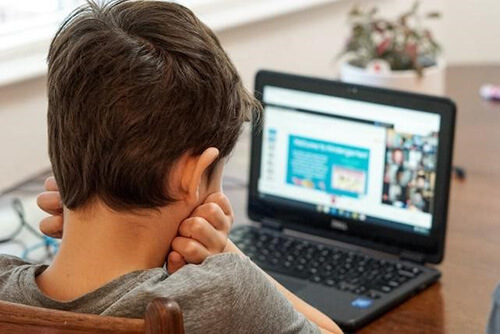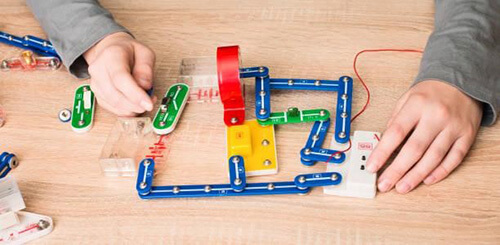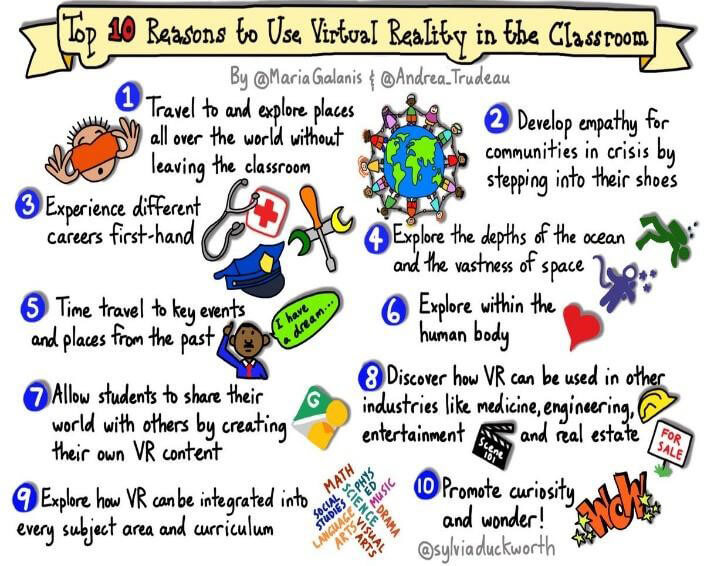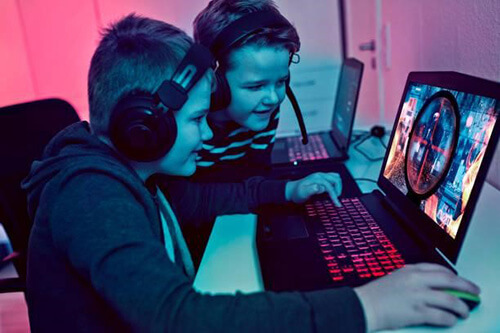For a few years now, school leaders have been focusing on various aspects of curricular and allied services of education, to improve school quality. These have embraced not just students and the school educational spaces, but also the other stakeholders including – parents and the community. While these aspects haven’t really changed much from year to year, the approach to them has, thereby bringing forth distinct and unique USPs for each institution.
We all know, the year 2020 & most of 2021 were like no other.
Without any forewarning, the world in entirety, was thrown into unknown waters and schools had to embrace novel and at times challenging practices to keep their head above water, to maintain some semblance of continuity in education.
Areas like professional learning, school infrastructure, ICT enrichment and social-emotional learning while remaining in the popular list as earlier, were now shoved many rungs lower by the new urgency of unknown ONLINE paradigms!
This Blog unravels the ‘top-of-the-ladder’ topics School leaders may wish to reflect upon, and why they are especially important for schools to think about, plan for and implement to face the future.
Paradigm 1: Online learning Style

The Herculean task in response to the pandemic, was how to effectively move lessons that were designed for ‘in-person’ sessions in a typical classroom, to the online mode. Teachers across the world had to make an overnight (or at best an over a week) transition to magically rise to the occasion! Many tried and acquired some experience – but for many, the challenge persisted.
The education community discovered in a flash that simply uploading worksheets, PDF lessons and video links to Google Classroom were ‘NOT ENOUGH’, ‘CAN’T DO’ and ‘WONT WORK’ strategies for learning success. Gaps built up and got worse.
“Good in-person teaching doesn’t equate with good online teaching. If all we ever do is replicate what we do face to face, then online learning will just be a cheap imitation of the classroom experience”, says Michele Eaton.
The need of the hour is to design online lessons that are – interactive, reduce cognitive load, and build in formative assessments. And for this to be successful, school leaders need to arrange for effective professional enrichment courses that will help teachers to take what they learned from teaching in the online and hybrid settings and move to the next level of what schooling may look like.
Not an easy task and perhaps what would be practical is to first form a committee of those to whom this comes easy. This would embrace all stakeholders. An effective experimentation followed by a thoroughly detailed plan can then be disseminated through organised groups to other school communities, in the locale, district or even at the grass root levels.
Paradigm 2: Professional Development

This leads to the next point – Teacher Professional Development, especially in the context of EdTech.
While PD is not a new domain of focus for schools, the pandemic and the introduction of NEP 2020 changed the flavour and modus operandi of ‘HOW TO’. No longer were teachers attending daylong face-to-face lectures at the school gatherings, Board organized workshops or out-of-town conferences and events.
Because of stringent covid protocols, the urgency to quickly learn new skills, within increasingly tight budgets, forced many educators to rely on in-house online sessions, Board arranged mandatory online sessions (doubled in quantity and at break-neck speed). Some teachers resorted to self-paced individual sessions as well.
Such initiatives tended to be one-way streets of information-overload for teachers, with many struggling to navigate a virtual conference, due to technical glitches and / or technology ignorance.

Without hands-on experience and in person guidance at the workshops, novel practices haven’t really been ‘successfully’ put in place. This can happen only if PD sessions are well-spaced out and teachers get time to plan, discuss and experiment with the new learning, with time and flexibility to develop one’s own integrated style.
Also, with the plethora of new ed Tech start-ups and the range of online courses, it can seem daunting to choose the most worthwhile online workshop/training in a learning landscape flooded with these choices. Probably the best way to select is to look to trusted sources.
QEDRAK offers ‘need of the hour’ Professional Development courses to prepare educators for the future of learning. Do visit the QED-SYNC page for available courses.
Paradigm 3: Social Emotional Learning – a forgotten aspect

Social-emotional learning, or SEL, involves the skills necessary to cope with emotions, set goals and maintain positive relationships. These are essential for learning but were a tall order for students, facing a barrage of COVID-related issues like – family job loss, stressed parents and the illness or death of friends or relatives. The same applied to the teachers. Much of the anxiety and trauma faced during the pandemic relate to deprivation of social interactions, unfamiliar teaching-learning styles, and the uncertainty of what the future holds.
With schools opening gradually into the ‘offline’ mode (albeit for limited days and hours), school leaders and teachers need to prepare parents & students, well in advance, for the actual day kids are expected to return to school. Even though kids miss the ‘friends’ element of school life, they have become so used to the comforts of studying from home, with – no early waking hours for travel time to school; no getting ready with the full uniform; frequent breaks between scheduled online classes; flexibility to turn OF or ON the mic and video; in some cases, inadequate monitoring of HW completion, as well as no checking of honest original individual work.
Many students do NOT wish to return to the structured discipline-heavy school environment. This was evidenced by some news reports in the print media of suicides by teenagers (and younger age groups) being forced by parents to start attending school. All educators should seek out SEL competence training in addition to trauma-informed teaching and culturally responsive nurturing.
Furthermore, schools will have to build resilience and support systems to handle all the possible thinkable and unthinkable emergencies that may arise after schools reopen. This means that every time an emergency occurs, the school does NOT need to shut down and go back to online in toto! The scope and degree of the urgency would need to be assessed practically and the two-way communication with students, parents and the community needs to be maintained to show the preparedness of the school to mitigate the problem and build faith that the educational process will continue with the least disturbance. A suitably selected committee with dedicated profiles for each aspect of the challenges needs to be in place to ensure a smooth realignment, every time a hiccup emerges.
To know more about the importance of SEL and how to make provisions for it, do look at our QEDRAK course list and the following sites –
- https://leadered.com/addressing-the-sel-needs-of-students-during-after-covid-19/
- https://7mindsets.com/how-sel-needs-to-work-in-everyday-teaching-and-learning/
Paradigm 4: Project-based learning in the online mode

One would think that project-based learning, or PBL, would be one of those educational strategies that would have to get sidetracked during remote and online learning. After all, one can’t really organize collaborative projects when students are not together in the same room, right?
Wrong!
When the pandemic hit, Nichlas Provenzano, a middle school technology teacher, was teaching an innovation and design class. At first glance, quite challenging (bordering on the impossible), when thinking about how he could teach that class remotely. Nichlas decided to implement ‘Genius Hour’, the ultimate PBL strategy. Genius hour is an instructional approach that allows students to decide what they want to learn and how they want to learn it. The teacher’s job is to support the student by offering resources and helping them understand complex material.
He told his students to create something using the resources they had at home. One student submitted images demonstrating his ability to build a side table that he designed himself.
Another student hydro-dipped some shoes and then created a website to demonstrate the process.
“This approach to Project Based personalized learning was a huge success in my middle school class just like it was in my high school class,” Provanzano says in the video, “The emphasis on personalization increases engagement, but more importantly, it builds the skills necessary to be lifelong learners long after they leave our classrooms.
To know more about how to integrate PBL into your online classroom, do look at our QEDRAK course list as well as the following sites:
- https://edtechmagazine.com/k12/article/2020/08/how-facilitate-project-based-learning-online
- https://pbltoolkit.weebly.com/genius-hour.html
Paradigm 5: Integrating Creativity within curriculum
Of course, creativity is nothing new. Human creativity is evidenced from the cave wall drawings to pottery and craft, clothing, artworks, building and vehicular designs, cartoons, play and movie scripts, best out of waste, inter alia.
Creativity has found a new definition these days as educators embrace more creative and less traditional methods for students to demonstrate skills and content knowledge.
Tim Needles, an art teacher from Smithtown High School in New York, loves to show teachers how to incorporate creativity into all topic areas. In his video “Digital Drawing Tools for Creative Online Learning,” he demonstrates how to “draw with code,” using the Code.org lesson called Artist. It merges math and computer science with art.

Needles is also a big fan of ‘Sketch noting’, (a method of taking notes by drawing pictures). Sketch-noting is not just a fun method for getting information on paper, it’s a proven strategy backed by learning science to help students recall information.
Nichole Carter, author of Sketch noting in the Classroom, says that sketch noting is not about drawing the perfect piece of art. It’s about getting the content on the page with drawings and text. That’s why she says it’s important for teachers to help students improve their visual vocabulary.
To know more about Sketch Noting do visit –
Paradigm 6: The idea of Digital Citizenship

The mantra of Digital Citizenship has been doing its rounds in educational circles for nearly a decade — but it had taken on a new flavour in the past two years — especially in the past year as remote and hybrid learning has shifted learning online.
In the beginning, School Leaders addressed the importance of digital citizenship with a focus on – internet & online safety, security and legality (protect your passwords, keep your identity secret, and cite sources when using intellectual property).
Now Schools need to shift focus onto opportunities of the digital world rather than the dangers – it is all about making sure students feel empowered to maximise the powers of digital tools and platforms to do good in the world — and that too responsibly.
Here are 5 aspects of Digital Citizenship that we may consider. DC needs to be …
- Inclusive: Open to multiple viewpoints and being respectful in digital interactions.
- Informed: Evaluating the accuracy, perspective and validity of digital media and social posts.
- Engaged: Using technology for civic engagement, problem solving and being a force for good.
- Balanced: Prioritizing time and activities online and off to promote mental and physical health.
- Alert: Being aware of online actions and their consequences and knowing how to be safe and ensuring others are safe online.
Look for more on Digital Citizenship at – https://digcitcommit.org/
Paradigm 7: Esports

Esports — aka online sports/games AND competitive video gaming or ‘gamification’— have exploded as a form of entertainment in the past few years, and now they are naturally finding their way into schools and after-school programs. Many educators are embracing gamification as ways to engage ‘hard-to-reach’ students who don’t necessarily gravitate to academics or sport/game pursuits.
However, research indicates that in the recent past, about 40% of students involved in esports have never participated in school activities.
Esports also promote interest in STEM opportunities and are a pathway for the growing esports industry. Kevin Brown, an esports specialist, says, “Educators can tap esports in the classroom to support just about every subject because esports connect student interests to learning in a positive way.”
Many school leaders and educators mistakenly believe that if teachers aren’t gamers themselves, they can’t incorporate esports in the curriculum or organize a club. Not true!
What we need to tell teachers who say they don’t play video games or don’t know about e-sports is – “Esports is about making kids enjoy growing and learning and providing them structure” Well, isn’t that what teachers do with core academics anyway? The content and strategy for the games is all out there on YouTube and Twitch. Most students will also help bring in the strategies. All one needs to do is integrate it with the academic curriculum.”
Look for more on esports in schooling at –
- https://www.intel.in/content/www/in/en/education/transforming-education/educational-gaming/esports.html
- https://files.bbystatic.com/6aa67c0facbfcd649273aa3b270c83ab/file_by_path/BestBuy_US/Gallery/Esports-by-Jim-O-117001.pdf
Paradigm 8: Equity and inclusion

The COVID-19 pandemic exposed many of the ugly inequities that have existed in education for a long time. It also created a few new ones. When schools moved online, many young learners and students were unable to access learning. While many schools were able to organize internet bandwidths, hotspots and laptops or tablets into the hands of teachers who needed them, the same was not the case with students. Lack of any gadgets and / or internet access at home, lack of adequate gadgets (with every family member requiring devices to WFH or SFH (Work or Study From Home), also the lack of parental support to guide young learners in using devices (even if there were some to spare), since parents too were working!
Sadly, a huge chunk of the age group 3yrs to 12 years has remained without any educational stimulation for over a year! This includes students from remote places, rural places – who have no digital access, as well as differently abled students who found it virtually impossible to shift to online education. The online sessions required independent study norms when such children required regular assistance in the pre Covid offline classes.
There are several other aspects to the complexities of the inequities wrought by the pandemic. One focus is the need for professional learning and providing support for teachers, students, and families. But digital equity also needs to consider – reinforcement sessions (remedials) for struggling students, social-emotional resources for families, counselling for isolation trauma & grief therapy sessions, entertainment, and group sessions.
For more on Equity & Inclusion, please visit –
- https://www.forbes.com/sites/tracybrower/2020/05/19/diversity-equity-and-inclusion-what-the-coronavirus-teaches-and-how-we-must-respond/?sh=2bfb4c1e4d05
- https://www.oecd.org/coronavirus/policy-responses/the-impact-of-covid-19-on-student-equity-and-inclusion-supporting-vulnerable-students-during-school-closures-and-school-re-openings-d593b5c8/
These were just a few facets that School leaders could contemplate when ‘Reinventing’ or ‘Revamping’ their Schools in preparation of the future of schooling for the grand REOPENING. While the points herein aren’t exhaustive, it is a start for many who may not have thought about these aspects. Do feel free to write in with your perspective.


